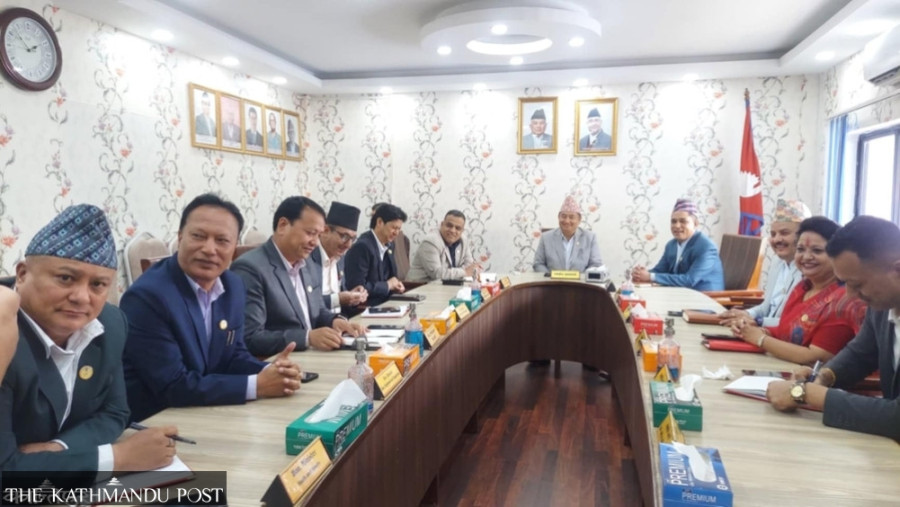Editorial
Bagmati’s self-harm
The provincial council of ministers’ decision to split a ministry could not have come at a worse time.
The Bagmati provincial government has made a decision that undercuts the foundation of the provincial system. A Cabinet meeting of the provincial council of ministers led by Chief Minister Bahadur Singh Lama on Tuesday decided to split a ministry to create a portfolio for Madu Kumar Shrestha, who had been serving without portfolio after Lama was elected chief minister and formed a Cabinet in July. This decision has come at a time when the victims of the floods and landslides triggered by incessant rains in the last week of September have been left in the lurch for a month and a half. The government of the province which is worst hit by the disaster has taken a decision to bifurcate a ministry and add liability to state coffers when the displaced people don’t even have proper temporary shelters. Elderly people, children, pregnant women and chronic patients have been forced to stay under tarpaulins. There is no place for children to study as their schools have been ravaged by devastating landslides and floods. This is happening while the provincial government should have concentrated its resources to shift the displaced people to safe temporary huts.
When the country’s two biggest parties—the Nepali Congress and the CPN-UML—agreed in the first week of July to join hands to run a coalition government, they said their top priorities would be to end instability, do away with unhealthy practices and anomalies seen in forming and running governments in the provinces and ensure good governance. As the two biggest parties running a government was in itself something unusual in the parliamentary system, they described the country’s present state of affairs as extraordinary, requiring extraordinary measures to resolve them. Political parties in Kathmandu are infamous for doing everything to reach power. The activities of the parties at the provincial level are worse. In the past few years, the inter-party wrangling took such an ugly form that disputes over making and breaking governments in two provinces—Koshi and Gandaki—reached the court, multiple times.
There are various groups in Nepal that are unhappy over the adoption of the federal system and devolution of centralised powers to provinces and local governments. At the time of constitution promulgation in 2015, the provincial governments were expected to work hard, connect themselves to the common people who had no access to the central government in Kathmandu and prove that the subnational administrations really listen to public grievances. Unfortunately, the performance of the provinces in the past decade has left a bad impression. Provinces are so unpopular that people have started to say that they would accept a two-tier federal system but not the provinces. Such a voice has become increasingly prominent even as federalism without provinces would be a system without a soul.
At a time the provinces are under such scrutiny, chief ministers need to form small and smart Cabinets, restrain from unnecessary expenditures, explore innovative and exemplary practices that would in turn garner public support and build a stronger case for strengthening the federal system. But the decisions like the one Bagmati Province took on Tuesday will do just the opposite: Add to people’s already growing scepticism of the provinces.




 16.12°C Kathmandu
16.12°C Kathmandu














